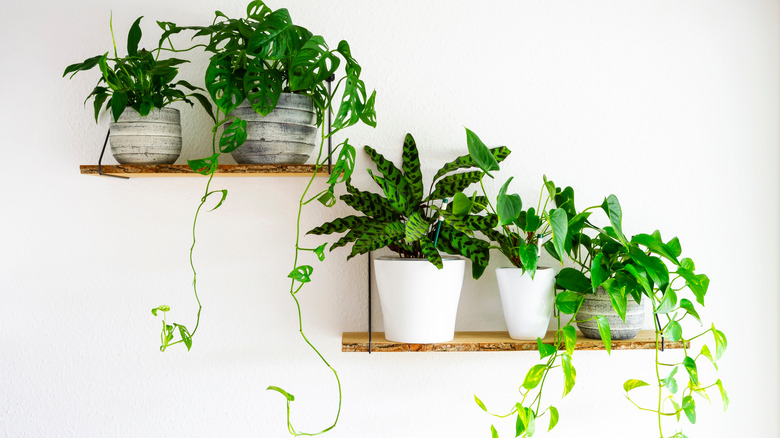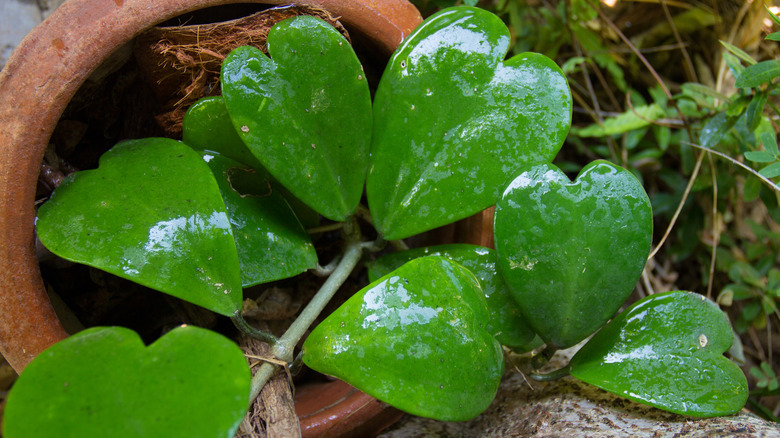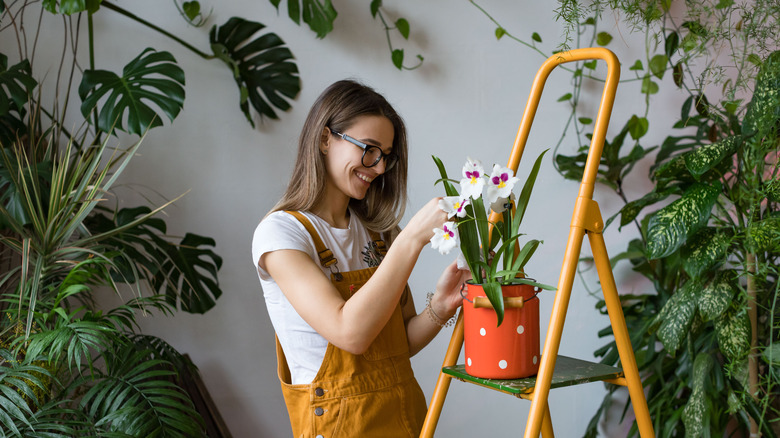Why You Should Think Twice Before Choosing Hoyas As A Houseplant
Houseplants are everywhere at the minute. From design influencers to housewives to college students decorating their dorms, everyone wants them. They're all over aesthetic Pinterest boards, and they cover every aisle in IKEA. They work in every room in the house, from long tendrils hanging above your bed to a Yucca plant in the corner of your kitchen; houseplants are here to stay. They add a calming presence to any room and can be used to mix up the decor of your space, says Good Housekeeping, so whether you are a seasoned plant owner or just starting, are there any plants you should avoid?
Hoyas are sprawling vine plants with thick leaves that can produce beautiful and fragrant flowers, though they seem to have developed a bad rep for several reasons. Why are Hoyas so difficult to care for? And what if you already own some that aren't doing so well?
Why Hoyas have a bad reputation
According to Osera Houseplant Care, Hoyas can be easily overwatered or underwatered. Also, depending on the room's humidity levels, they may require different watering needs altogether. They do prefer humidity if possible, and if the room they are in isn't humid enough, they can quickly start to dry out.
They also prefer sunlight all day, which can be tricky to achieve unless you are prepared to move them around the house to the sunniest spots. Some species of Hoya have long tendrils, which aren't to everyone's preference; if you live in a small apartment or have children or animals, long dangling leaves could be more of an annoyance than a bonus feature.
They can also be costly. A rare type of Hoya, known as the carnosa compacta sold on the auction site TradeMe for $6,500 in 2020, states Why Farm It. Though they're not all thousands of dollars, many of the less common types of Hoyas are among the most expensive plants at a nursery. So they're difficult to manage, require specific growing environments, and come with a pretty hefty price tag. Plenty of reasons to steer clear — but what if you already have one and it's not doing so well?
How to care for a Hoya plant if you already own one
What can you do if you already own one of these troublesome plants and it's causing problems? Many Hoyas are prone to blackspot or edema, usually due to ineffective watering. It is hard to determine if the Hoya is receiving enough or too much water as some Hoyas are succulents, so they hold water in their leaves, and some Hoyas hold water in their roots while the soil appears dry.
Garden For Interior had a great tip for dealing with fungal black spots; make up a solution of a tablespoon of baking soda, 2.5 tablespoons of vegetable oil, a teaspoon of dish soap, and a gallon of water. Spray this solution in small amounts to prevent black spots from occurring. Other tips from Garden For Interior are to water the plants early in the morning and ensure they get plenty of air. Keep temperatures below 70 degrees Fahrenheit where possible and remove any diseased leaves immediately to stop the spread of infections.


